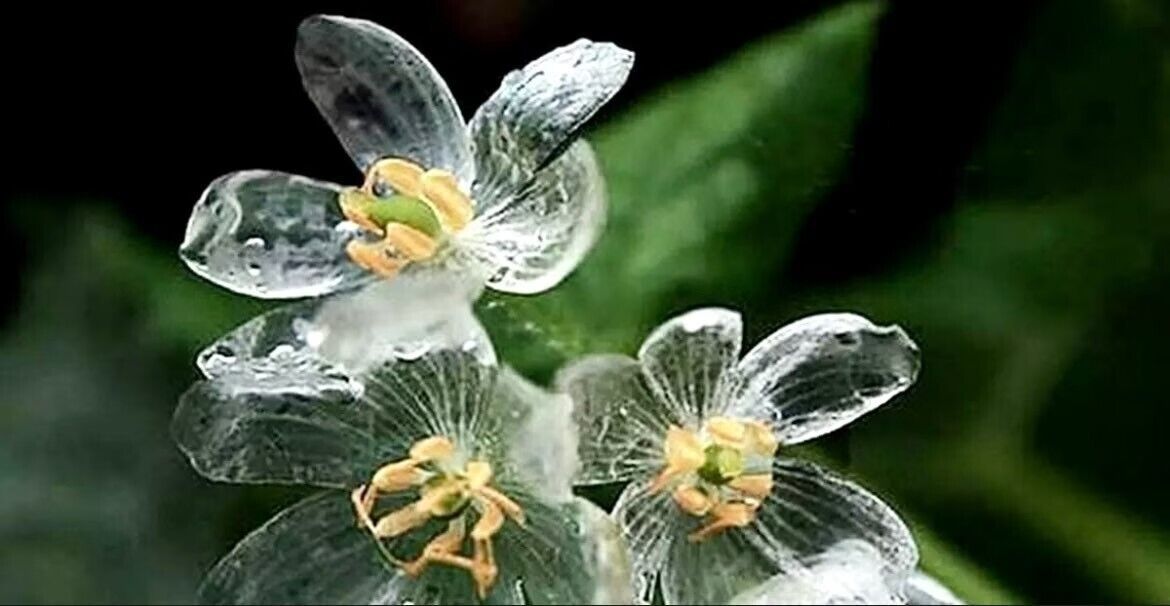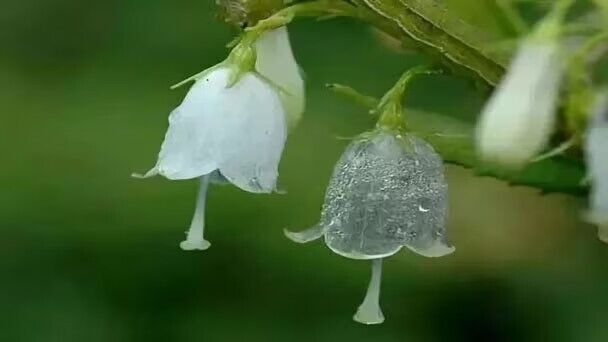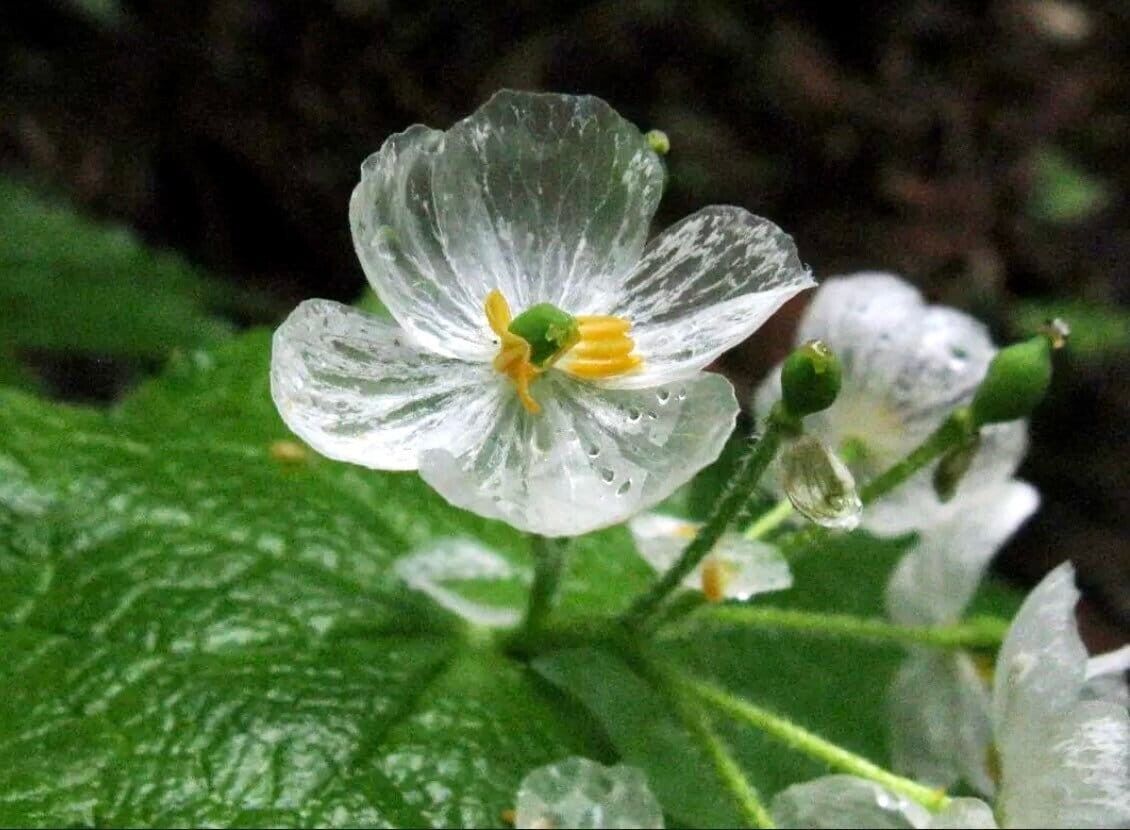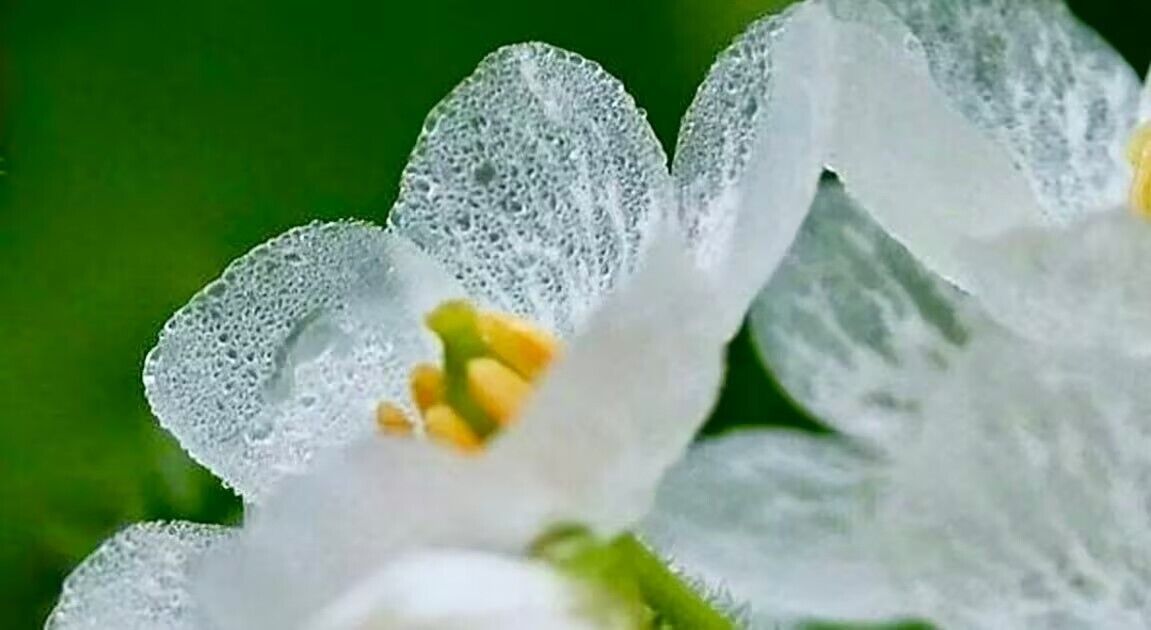Your Plant Bitch
Skeleton Flower Seeds ~ Crystal Flower ~ Gray’s Double-Leaf ~ Twoflower ~ Diphyl
Skeleton Flower Seeds ~ Crystal Flower ~ Gray’s Double-Leaf ~ Twoflower ~ Diphyl
Couldn't load pickup availability
These plants have a secret. When mountain rains arrive, the lovely blooms turn clear, glowing with pearly iridescence. Diphylleia grayi is a deciduous perennial which dies back in winter. Its bloom time is May to July, when tiny white flowers with yellow centers burst onto the scene. Not to be overshadowed, the large deeply lobed foliage spreads over the stems with umbrella-like character. The magic of the translucent blooms is a fascinating bit of skeleton flower info. Water seems to melt the color out of the petals, turning them into windows of clear tissue. The tissue thin flowers are so delicate that moisture causes the effect.
~ Includes ~
~ 30 Seeds.
~ Grow and Care Instructions.
💕Come visit YourPlantBitchcom to see my newest items!!! Rest assured, my main concern is my customers always!!! I try to provide the best customer service and strive to create a positive shopping experience in my shop. I’m always available to answer any questions or concerns you may have before and after your purchase. Custom orders are welcome!!! I can even include a handwritten gift card for no additional cost. Feel free to send me an offer since I will always do my absolute best to work with my customer’s offers. Contact me with any questions or if you’re interested in my sold~out items or need different quantities.
Thank you so very much for supporting my small business!!!
✨ Follow Me ✨
Instagram: YourPlantBitch
Facebook: Your Plant Biitch
💚 Best Wishes, Your Plant B*tch (Quinn)
☠️Skeleton Flower Grow and Care Instructions☠️
~ Grow Instructions ~
Sowing is carried out both in the autumn, and in the winter or spring. Spring planting requires mandatory stratification within 4 months. For the first 2 months, they are stored in wet sand, provided that the air temperature is up to 18 degrees. Next, the seed material is transferred to a refrigerating device, where the seeds are kept at an air temperature of 0...+3 degrees for another 2 months. In the spring, the seed material can be sown either in open soil or in special containers where germination will be carried out. When the seedlings grow up, they are transplanted to a permanent place of growth. Young bushes will bloom no earlier than in 3 years.
You can plant skeleton flowers in containers or in ground. Prepare the soil to ensure good drainage and add plenty of compost.
Container bound plants benefit from the addition of peat moss. Diphylleia will die back in winter. If you live in zones 4 to 9, it should survive freezing temperatures with a light layer of mulch. Plants grown in USDA zones below 4 should container garden the plants and bring them indoors at the end of summer to overwinter. Wintering pots need less water during their dormant period. Increase watering as spring approaches and acclimate the plant over several days before installing outdoors full time.
In most cases, caring for skeleton flower plants is low maintenance. They will benefit from a diluted plant food in early spring and dead foliage should be cut off to allow new leaves to unfurl unimpeded.
The culture develops best on moistened soil, even under large trees. The optimal habitat is considered to be fertile land in a small partial shade. It is also important to choose areas where winds do not fall. Otherwise, there is a risk of damage to the culture.
Fertilizers
Since Diphylleia grayi is a wild plant by nature, it does not need special fertilizing, because it is able to develop in any conditions. But if desired, it can be fertilized with complex compositions in a small consistency.
Watering
Systematic moistening of the plant is an important point, since Gray's double-leaf prefers moist soil types. Watering can be carried out regularly after 1 day. But sometimes (if weather conditions allow), the moisture is reduced to 1 time in 7 days. For each culture, you will need to add up to 10 liters of water. Mulching also does not interfere, it minimizes the evaporation of moisture from the ground surface. Straw, peat or sawdust are used for mulch.
Diseases
This culture is not afraid of pests and diseases. But it is possible to carry out prevention using special formulations. There are cases when young cultures "attack" slugs and snails. They are collected manually, and to prevent further attacks, holes are torn out around the flower bed, where sharp expanded clay is poured.
Wintering
In the autumn, when the plants die, you will need to remove them with a pruner. Severe winters are not terrible for the flower, so there is no need to use a covering material.
~ Care Instructions ~
Light
Skeleton flower is sensitive to sunlight. It requires a shady location, preferably woodland, where it is fully protected from the hot midday and afternoon sun.
Soil
The soil should be deep, rich in humus and consistently moist yet well drained. To mimic the plant's native habitat, where skeleton flower gets a constant supply of decaying organic matter, mulch the plant with an ample amount of compost or leaf mold every year.
Water
Skeleton flower requires consistent moisture so select a location with naturally moist soil. During a dry spell, water it slowly and deeply by drip irrigation.
Temperature and Humidity
Skeleton flower needs a cool, temperate climate, and it likes humid air. It won’t do well in hot, dry summer weather.
The plant dies back during the winter. Covering it with a layer of organic mulch helps to protect it from subzero winter temperatures.
Fertilizer
If there is not enough natural organic matter from fallen leaves, you can add a complete fertilizer in the early spring.
Propagating
Diphylleia grows stems from its thick underground rhizomes. To propagate, divide the rhizomes, or take cuttings and replant them.
Common Pests/Diseases
Skeleton flower is not commonly affected by any pests or diseases.
Share








